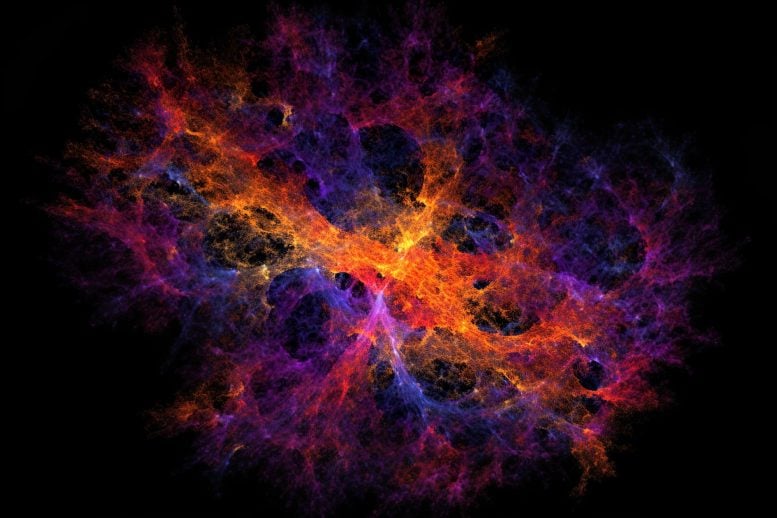
An international team of astrophysicists and cosmologists have submitted five papers suggesting the “clumpiness” (S8 value) of the universe’s dark matter is 0.76, a figure that aligns with other gravitational lensing surveys but not with the 0.83 value derived from the Cosmic Microwave Background.
An international team of scientists used advanced techniques and the Hyper Suprime-Cam to study dark matter’s “clumpiness,” finding an S8 value of 0.76, conflicting with the 0.83 value from the Cosmic Microwave Background. This discrepancy could indicate measurement errors or an incomplete standard cosmological model.
An international team of astrophysicists and cosmologists at various institutes including the Kavli Institute for the Physics and Mathematics of the Universe (Kavli IPMU) have submitted a set of five papers, measuring a value for the “clumpiness” of the universe’s dark matter, known to cosmologists as S8, of 0.76, which aligns with values that other gravitational lensing surveys have found in looking at the relatively recent universe — but it does not align with the value of 0.83 derived from the Cosmic Microwave Background, which dates back to the universe’s origins when the universe was about 380,000 years old. Their results were uploaded as pre-print papers to arXiv.
The gap between these two values is small, but as more and more studies confirm each of the two values, it doesn’t appear to be accidental. The possibilities are that there’s some as-yet unrecognized error or mistake in one of these two measurements or the standard cosmological model is incomplete in some interesting way.
Dark energy and dark matter make up 95% of our universe we see today, but we understand very little about what they actually are and how they’ve evolved over the history of the universe. Clumps of dark matter distort the light of distant galaxies through weak gravitational lensing, a phenomenon predicted by Einstein’s General Theory of Relativity.

Figure 1: An example of an image obtained with HSC-SSP. Credit: HSC-SSP project & NAOJ
“This distortion is a really, really small effect. The shape of a single galaxy is distorted by an imperceptible amount. But combining the measurements for millions of galaxies allows one to measure the distortion with quite high precision,” said Kavli IPMU Professor Masahiro Takada.
The standard model is defined by only a handful of numbers: the expansion rate of the universe, a measure of how clumpy the dark matter is (S8), the relative contributions of the constituents of the universe (matter, dark matter, and dark energy), the overall density of the universe, and a technical quantity describing how the clumpiness of the universe on large scales relates to that on small scales.
Cosmologists are eager to test this model by constraining these numbers in various ways, such as by observing the fluctuations in the Cosmic Microwave Background, modeling the expansion history of the universe, or measuring the clumpiness of the universe in the relatively recent past.
A team led by astronomers from Kavli IPMU, the University of Tokyo, Nagoya University, Princeton University, and astronomical communities of Japan and Taiwan, have spent the past year teasing out the secrets of this most elusive material, dark matter, using sophisticated computer simulations and data from the first three years of the Hyper Suprime-Cam survey. The observations from this survey used one of the most powerful astronomical cameras in the world, the Hyper Suprime-Cam (HSC) mounted on the Subaru Telescope on the summit of Maunakea in Hawaii.
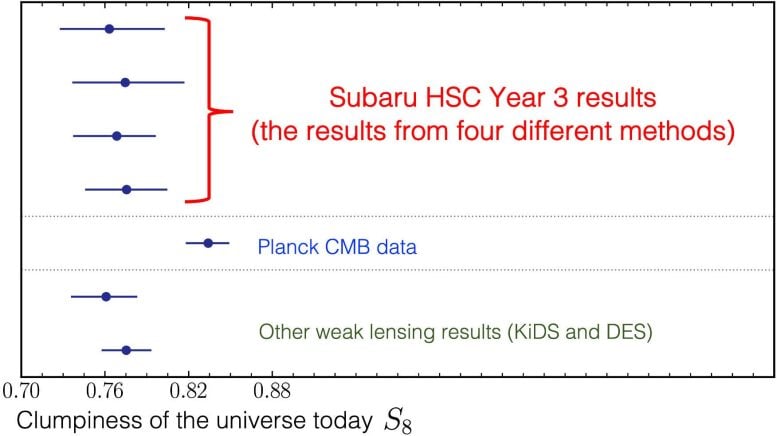
Figure 2: The measurement results of S8 parameter from HSC-SSP Year 3 data. The chart shows the results from four different methods, which used different parts of the HSC-SSP Year 3 data or combined the HSC-SSP Year 3 data with other data. For comparison, “Planck CMB” shows the measurement result for S8 from the cosmic microwave background data from the Planck satellite. “Other weak lensing results” shows the results from similar weak lensing measurements based on the Dark Energy Survey (DES) and Kilo-Degree Survey (KiDS) data. Credit: Kavli IPMU
Hiding and uncovering the data
The team performed a “blinded analysis.”
“Scientists are human beings, and they do have preferences. Some would love to really find something fundamentally new, while others might feel comfortable if they find results that look consistent with foreseen results. Scientists have become self-aware enough to know that they will bias themselves, no matter how careful they are, unless they carry out their analysis without allowing themselves to know the results until the end,” said Nagoya University Kobayashi-Maskawa Institute for the Origin of Particles and the Universe (KMI) Associate Professor Hironao Miyatake.
To protect the results from such biases, the HSC team hid their results from themselves and their colleagues for months. The team even added an extra obfuscating layer: they ran their analyses on three different galactic catalogs, one real and two fake with numerical values offset by random values. The analysis team didn’t know which of them was real, so even if someone did accidentally see the values, the team wouldn’t know if the results were based on the real catalog or not.
The team spent a year on the blind analysis. On December 3 2022, the team gathered together on Zoom – one Saturday morning in Japan, Friday evening in Princeton – for the “unblinding.” The team unveiled the data, and ran their plots, immediately they saw it was great according to Takada. “Blinded analysis means you cannot take a peak at the results while running the analysis, which was extremely stressful, but as soon I saw the final result, all of that anxiety flew out of the window,” said Kavli IPMU graduate student Sunao Sugiyama.
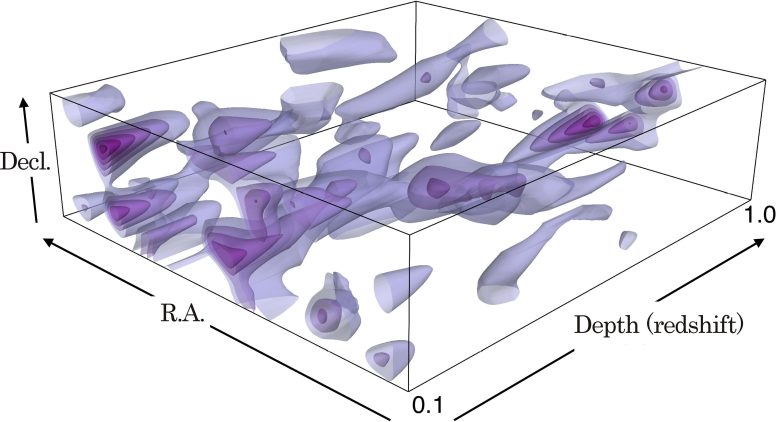
Figure 3: An example of a 3D distribution of dark matter derived from HSC-SSP. This map is obtained by using the first year’s data, but the present study examined an area on the sky about three times larger than that. Credit: University of Tokyo/NAOJ
A huge survey with the world’s largest telescope camera
HSC is the largest camera on a telescope of its size in the world. The survey that the research team used covers about 420 square degrees of the sky, about the equivalent of 2000 full moons. It is not a single contiguous chunk of sky, but split among six different pieces, each about the size of a person’s outstretched fist. The 25 million galaxies the researchers surveyed are so distant that instead of seeing these galaxies as they are today, the HSC recorded how they were billions of years ago.
Each of these galaxies glows with the fires of tens of billions of suns, but because they are so far away, they are extremely faint, as much as 25 million times fainter than the faintest stars we can see with the naked eye.
For more on this research, see Measuring Dark Matter With Hyper Suprime-Cam Reveals Discrepancy.
References:
“Hyper Suprime-Cam Year 3 Results: Cosmology from Galaxy Clustering and Weak Lensing with HSC and SDSS using the Emulator Based Halo Model” by Hironao Miyatake, Sunao Sugiyama, Masahiro Takada, Takahiro Nishimichi, Xiangchong Li, Masato Shirasaki, Surhud More, Yosuke Kobayashi, Atsushi J. Nishizawa, Markus M. Rau, Tianqing Zhang, Ryuichi Takahashi, Roohi Dalal, Rachel Mandelbaum, Michael A. Strauss, Takashi Hamana, Masamune Oguri, Ken Osato, Wentao Luo, Arun Kannawadi, Bau-Ching Hsieh, Robert Armstrong, Yutaka Komiyama, Robert H. Lupton, Nate B. Lust, Lauren A. MacArthur, Satoshi Miyazaki, Hitoshi Murayama, Yuki Okura, Paul A. Price, Tomomi Sunayama, Philip J. Tait, Masayuki Tanaka and Shiang-Yu Wang, 3 April 2023, Astrophysics > Cosmology and Nongalactic Astrophysics.
arXiv:2304.00704
“Hyper Suprime-Cam Year 3 Results: Measurements of Clustering of SDSS-BOSS Galaxies, Galaxy-Galaxy Lensing and Cosmic Shear” by Surhud More, Sunao Sugiyama, Hironao Miyatake, Markus Michael Rau, Masato Shirasaki, Xiangchong Li, Atsushi J. Nishizawa, Ken Osato, Tianqing Zhang, Masahiro Takada, Takashi Hamana, Ryuichi Takahashi, Roohi Dalal, Rachel Mandelbaum, Michael A. Strauss, Yosuke Kobayashi, Takahiro Nishimichi, Masamune Oguri, Arun Kannawadi, Robert Armstrong, Yutaka Komiyama, Robert H. Lupton, Nate B. Lust, Satoshi Miyazaki, Hitoshi Murayama, Yuki Okura, Paul A. Price, Philip J. Tait, Masayuki Tanaka and Shiang-Yu Wang, 3 April 2023, Astrophysics > Cosmology and Nongalactic Astrophysics.
arXiv:2304.00703
“Hyper Suprime-Cam Year 3 Results: Cosmology from Galaxy Clustering and Weak Lensing with HSC and SDSS using the Minimal Bias Model” by Sunao Sugiyama, Hironao Miyatake, Surhud More, Xiangchong Li, Masato Shirasaki, Masahiro Takada, Yosuke Kobayashi, Ryuichi Takahashi, Takahiro Nishimichi, Atsushi J. Nishizawa, Markus M. Rau, Tianqing Zhang, Roohi Dalal, Rachel Mandelbaum, Michael A. Strauss, Takashi Hamana, Masamune Oguri, Ken Osato, Arun Kannawadi, Robert Armstrong, Yutaka Komiyama, Robert H. Lupton, Nate B. Lust, Satoshi Miyazaki, Hitoshi Murayama, Yuki Okura, Paul A. Price, Philip J. Tait, Masayuki Tanaka and Shiang-Yu Wang, 3 April 2023, Astrophysics > Cosmology and Nongalactic Astrophysics.
arXiv:2304.00705
“Hyper Suprime-Cam Year 3 Results: Cosmology from Cosmic Shear Power Spectra” by Roohi Dalal, Xiangchong Li, Andrina Nicola, Joe Zuntz, Michael A. Strauss, Sunao Sugiyama, Tianqing Zhang, Markus M. Rau, Rachel Mandelbaum, Masahiro Takada, Surhud More, Hironao Miyatake, Arun Kannawadi, Masato Shirasaki, Takanori Taniguchi, Ryuichi Takahashi, Ken Osato, Takashi Hamana, Masamune Oguri, Atsushi J. Nishizawa, Andrés A. Plazas Malagón, Tomomi Sunayama, David Alonso, Anže Slosar, Robert Armstrong, James Bosch, Yutaka Komiyama, Robert H. Lupton, Nate B. Lust, Lauren A. MacArthur, Satoshi Miyazaki, Hitoshi Murayama, Takahiro Nishimichi, Yuki Okura, Paul A. Price, Philip J. Tait, Masayuki Tanaka and Shiang-Yu Wang, 3 April 2023, Astrophysics > Cosmology and Nongalactic Astrophysics.
arXiv:2304.00701
“Hyper Suprime-Cam Year 3 Results: Cosmology from Cosmic Shear Two-point Correlation Functions” by Xiangchong Li, Tianqing Zhang, Sunao Sugiyama, Roohi Dalal, Markus M. Rau, Rachel Mandelbaum, Masahiro Takada, Surhud More, Michael A. Strauss, Hironao Miyatake, Masato Shirasaki, Takashi Hamana, Masamune Oguri, Wentao Luo, Atsushi J. Nishizawa, Ryuichi Takahashi, Andrina Nicola, Ken Osato, Arun Kannawadi, Tomomi Sunayama, Robert Armstrong, Yutaka Komiyama, Robert H. Lupton, Nate B. Lust, Satoshi Miyazaki, Hitoshi Murayama, Takahiro Nishimichi, Yuki Okura, Paul A. Price, Philip J. Tait, Masayuki Tanaka, Shiang-Yu Wang, 3 April 2023, Astrophysics > Cosmology and Nongalactic Astrophysics.
arXiv:2304.00702


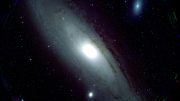
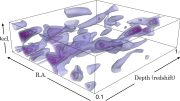
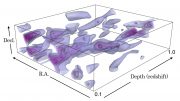
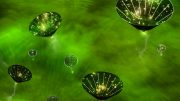

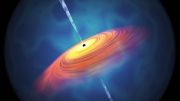
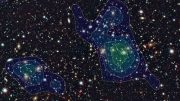
When a fudge factor (dark matter/energy) is needed because 95% of the universe stands unaccounted for, it is time to revisit the measurements and the underlying equations!
To quote: “Yeah. Nah.” As figure 3 shows dark matter is an observation, not “a fudge factor” (whatever that is). A minute part (0.2 %) is known to be neutrinos.
It is also totally different from (also observed) dark energy, black holes et cetera, whose effects it shouldn’t be confused with.
At least one person I’ve seen is claiming Fig. 3 shows DM filaments.
DM filaments are supposed to span between galaxy-enveloping DM halos, so the continuing refusal to add information on luminous matter to Fig. 3 becomes an effort to be particularly aggravating on this point. Obviously there are galaxy-scale focus problems with Fig. 3 if it’s supposed to reveal filaments joining halos.
The source of this macro focus problem is in all likelihood a failure to consider a quantum angular moment in radiated gravity carriers, quantized at a sub-baryonic scale, in combination with an ability of cold baryons to behave like gravitational energy retro-reflectors capable of focusing gravitational flows into flow networks further forming sheetlike structures between voids.
To quote: “Yeah. Nah.”
But to respond to the first part, especially since I suspect you are responding to an earlier discussion on the dark matter filaments of Figure 3, they do add information on the luminous matter distribution of the cosmological filaments. Those remnants from the inflation era energy density fluctuations, before hot big bang, is what constitutes the cosmic web.
To quote – extensively, but it is a huge topic – from the US National Academies lates Decadal Survey [“Pathways to Discovery in Astronomy and Astrophysics for the 2020s (2021)”, Appendix C Report of the Panel on Cosmology]:
“A vast number of observations allow us to characterize the state of the universe early in its history when it was hot, dense, and expanding rapidly. One of the fundamental discoveries of modern cosmology is that the primordial density fluctuations, the seeds of the structure of the universe observed throughout cosmic history, were created before the hot phase of the Big Bang. …
In inflation, the universe went through an early period of accelerated expansion that smoothed out prior anisotropies, ending in a dramatic event that filled the universe with high-energy particles. …
The statistical properties of the primordial density fluctuations in the universe encode information about the physical processes responsible for their generation. Minimal models of inflation involve a single field that evolves during inflation, serving as a clock that determines when inflation ends and the Hot Big Bang begins. …
Detailed measurements of the primordial power spectrum can be advanced with new maps of the CMB, large-scale structure, and clustering of the intergalactic medium; in particular, the surveys required to measure non-Gaussianity will be excellent for measuring the large-scale power spectrum.
Deviations at much smaller scales could be detected owing to their impact on CMB spectral distortions or on small-scale structure in early galaxy formation. …
As such, the way dark matter clusters gravitationally is a unique window into the nature of the dark matter and its attendant forces.”
I can go on and attempt to describe how the filaments form – I have done so many times, including on this site – but until that becomes necessary I can tip the interested that cosmologist Susskind’s Stanford courses are free on the web and describe that.
Reading further articles I note that Webb has now observed the most distant filaments yet. The press releases contains a partial description of the process.
From EurekAlert “Astronomers identify the earliest strands of the cosmic web”: “Using NASA’s James Webb Space Telescope, a team of scientists led by University of Arizona astronomers has discovered a threadlike arrangement of 10 galaxies that existed just 830 million years after the Big Bang.
Lined up like pearls on an invisible string, the 3-million-light-year-long structure is anchored by a luminous quasar – a galaxy with an active, supermassive black hole at its core. The team believes the filament will eventually evolve into a massive cluster of galaxies, …”. “Galaxies are not scattered randomly across the universe. They gather together not only into clusters and clumps, but form vast interconnected filamentary structures, separated by gigantic barren voids in between. This “cosmic web” started out tenuous and became more distinct over time as gravity drew matter together.
Embedded in vast “oceans” of dark matter, galaxies form where dark and regular matter accumulate in localized patches that are denser than their surroundings. Similar to the crests of waves in the ocean, galaxies ride on continuous strings of dark matter known as filaments, explained Xiaohui Fan, Regents’ Professor of Astronomy at Steward and a co-author on both publications. The newly discovered filament marks the first time such a structure has been observed at a time when the cosmos was just 6% of its current age.”
From Sky & Telescope “JWST TURNS ITS EYES ON SUPERMASSIVE BLACK HOLES AND THE GALAXIES THAT HOST THEM”: “In a third study in Astrophysical Journal Letters, Feige Wang (also at Steward Observatory) and colleagues find that one of these eight quasars is part of a much larger cosmic structure. This quasar and 10 other galaxies all lie along a filament that’s twice as long as it is wide. Each galaxy is brimming with newborn stars, revealed by the characteristic signature of doubly ionized oxygen. The filament is gigantic, spanning a couple arcminutes on the sky and millions of light-years in space.
The intrepid infrared explorer is offering astronomers a jump back in time, enabling them to see quasars at earlier times than ever before.
The James Webb Space Telescope (JWST) has looked back to when the universe was in its infancy and found black holes already containing the mass of hundreds of millions of Suns. This new window on the early universe, as reported in four new studies, shows a view surprisingly similar to the one closer to home.
We don’t see supermassive black holes directly, of course. It’s the gas around them that heats up and glows as it swirls into the maw of feeding black holes, known as quasars. The emitted light is brightest at ultraviolet wavelengths, but those wavelengths stretch as they pass through the expanding universe to Earth, putting the light of distant quasars right in the range of JWST’s sensitive infrared capabilities.
“It’s a fun time for the quasar community!” exclaims Karl Gebhardt (University of Texas at Austin), who was not involved in the three studies. “I’m loving watching and reading about the JWST data coming in regarding black holes in the early universe.”
Four new studies focus on 11 quasars dating back to the cosmic dawn. One of these, led by Rebecca Larson (Rochester Institute of Technology), reports the most distant quasar known — just 580 million years after the Big Bang (at a redshift of 8.7). Despite the youth of the universe in which this quasar resides, it has already grown to hold 9 million Suns’ worth of mass. This study, part of the the Cosmic Evolution Early Release Science (CEERS) survey, will appear in Astrophysical Journal Letters.
Spectrum of most distant quasar known The image (top) and spectrum (bottom) of the most distant quasar known, CEERS 1019. The spectrum shows that the black hole existed 570 million years after the Big Bang. This is the most distant active supermassive black hole ever found.
NASA
Eight additional quasars come from the ASPIRE program (somehow short for “A Spectroscopic Survey of Biased Halos in the Reionization Era”), which is designed to observe 25 quasars in total. Astronomers had previously found the black holes that power these eight quasars to range from 600 million to 3 billion solar masses. (For comparison, our galaxy’s central black hole has a mass of only 4 million Suns.) More precise measurements from JWST confirm that the prior measurements were roughly correct, albeit slightly overestimated: the sample’s new mass range is from 600 million to 2 billion Suns. The result, Jinyi Yang (Steward Observatory) and colleagues report in Astrophysical Journal Letters, confirms the existence of billion-solar-mass black holes some 800 million years after the Big Bang.
In a third study in Astrophysical Journal Letters, Feige Wang (also at Steward Observatory) and colleagues find that one of these eight quasars is part of a much larger cosmic structure. This quasar and 10 other galaxies all lie along a filament that’s twice as long as it is wide. Each galaxy is brimming with newborn stars, revealed by the characteristic signature of doubly ionized oxygen. The filament is gigantic, spanning a couple arcminutes on the sky and millions of light-years in space.
Wang’s team makes the case that this structure is actually a galaxy cluster in the making. But he cautions that because the protocluster is still coming together, it’s much larger than its grown-up siblings. “[Protoclusters] are still in the early stages of their evolution and have not yet developed into fully formed clusters,” Wang explains. “These structures serve as excellent indicators of large-scale galaxy overdensities or the underlying dark matter density in the early universe.””
Oops. Sorry for the copy&paste error in the longer comment. I’ll try again, for readability:
Reading further articles I note that Webb has now observed the most distant filaments yet. The press releases contains a partial description of the process.
From EurekAlert “Astronomers identify the earliest strands of the cosmic web”: “Using NASA’s James Webb Space Telescope, a team of scientists led by University of Arizona astronomers has discovered a threadlike arrangement of 10 galaxies that existed just 830 million years after the Big Bang.
Lined up like pearls on an invisible string, the 3-million-light-year-long structure is anchored by a luminous quasar – a galaxy with an active, supermassive black hole at its core. The team believes the filament will eventually evolve into a massive cluster of galaxies, …”. “Galaxies are not scattered randomly across the universe. They gather together not only into clusters and clumps, but form vast interconnected filamentary structures, separated by gigantic barren voids in between. This “cosmic web” started out tenuous and became more distinct over time as gravity drew matter together.
Embedded in vast “oceans” of dark matter, galaxies form where dark and regular matter accumulate in localized patches that are denser than their surroundings. Similar to the crests of waves in the ocean, galaxies ride on continuous strings of dark matter known as filaments, explained Xiaohui Fan, Regents’ Professor of Astronomy at Steward and a co-author on both publications. The newly discovered filament marks the first time such a structure has been observed at a time when the cosmos was just 6% of its current age.”
From Sky & Telescope “JWST TURNS ITS EYES ON SUPERMASSIVE BLACK HOLES AND THE GALAXIES THAT HOST THEM”: “In a third study in Astrophysical Journal Letters, Feige Wang (also at Steward Observatory) and colleagues find that one of these eight quasars is part of a much larger cosmic structure. This quasar and 10 other galaxies all lie along a filament that’s twice as long as it is wide. Each galaxy is brimming with newborn stars, revealed by the characteristic signature of doubly ionized oxygen. The filament is gigantic, spanning a couple arcminutes on the sky and millions of light-years in space.
Wang’s team makes the case that this structure is actually a galaxy cluster in the making. But he cautions that because the protocluster is still coming together, it’s much larger than its grown-up siblings. “[Protoclusters] are still in the early stages of their evolution and have not yet developed into fully formed clusters,” Wang explains. “These structures serve as excellent indicators of large-scale galaxy overdensities or the underlying dark matter density in the early universe.””
“This distortion is a really, really small effect. The shape of a single galaxy is distorted by an imperceptible amount. But combining the measurements for millions of galaxies allows one to measure the distortion with quite high precision,”
My initial comment here amounts partly to a suggestion to add a stationary galaxy-scaled ripple (monotonic complex variable) to the infamous monotonic gravity well, in addition to a scale-unlimited cold baryonic focus effect.
If Fig. 3 fits cluster scale better than galactic scale then a larger version of the focus problem mentioned above may also manifest itself. it’s not a big change to add a cluster-scale angular momentum to the aforementioned galactic-scale angular momentum effect. A center-stationary galactic scale ripple (a complex field rotation) is simply accounted for by rescaling baryon size using the dimensionless ratio of electric and gravitational effects between distant charged baryons to define the angular rate required, forming a sort of cosmic baryon effect horizon, apparently partly anticipated by Dirac with his dimensionless “Large Numbers Hypothesis.” Addition of sub-quark interactions involving strong force carriers could be reflected in a larger scale ripple structure seen capturing one or more clusters. A separate baryonic scale ripple structure for gravity-type effects recast with gluon carriers and sub-baryonic angular rates conceivably could also explain quark confinement.
Yeah. Nah.
You know that cat toy where a ball is confined to move in a ring really fast when pushed? Dark Matter experts should study that things spin profile instead of bothering everyone with misplaced Einstein worship.
Apparently the same geniuses playing with dual slits and identical molecular pairings can’t figure out that a Stern Gerlach magnet does obvious things to electron streams to make the electrons pair up with opposing ionic magnetic fields.
Yes, well, this issue remains insignificant. More precisely, the significance remains well below what would constitute a tension (like with the Hubble rate), as Figure 2 shows.
Still would like to know why luminous matter is too embarrassing to show in Fig. 3.
Apparently the frequency window of NANOgrav is large enough to see that BH mass is extremely underestimated. It’ll be explained away with no change to exotic DM prevalence estimates, like everything else that confronts royal cargo Einstein worship. How is a rippled gravity lens (like a galactic Fresnel) supposed to stand out with microlensing … via secret prayer to Albert?
Uniform voids that the BBC ignores for larger irregular voids:
https://www.bbc.com/news/science-environment-57244708
Overpraised DM Simulation voids lack spatial regularity in comparison:
https://www.researchgate.net/figure/3D-Dark-matter-map-simulation-Its-beautiful-it-must-be-true_fig26_309717431
Low interaction cluster scale DM ring effect:
https://www.esa.int/Science_Exploration/Space_Science/Hubble_sees_dark_matter_ring_in_a_galaxy_cluster
Another low interaction cluster scale DM ring effect:
https://www.nasa.gov/feature/jpl/galaxy-clusters-reveal-new-dark-matter-insights
Higher interaction cluster spatial regularity (clumps all practically same size):
https://www.esa.int/ESA_Multimedia/Images/2008/01/Hubble_maps_dark_matter_web_in_a_large_galaxy_cluster
Articles titled “Hubble sees dark matter ring in a galaxy cluster” and “Galaxy Clusters Reveal New Dark Matter Insights” show concentric ripple structure in cluster scale DM.
Also consider that the “smoking gun” Bullet Cluster always has the xray red component serving primarily to support the dubious suggestion that the DM effect is lagging the luminous matter.
The remarkable degree of void regularity in the deep field DM effect mapping in “Dark matter map of KiDS survey region (region G12)” is a significant contrast to the irregularity of the standard simulation shown in “A Glimpse of the Very Early Universal Web” as standard model gravity lacks the spatial regularity of an intrinsic stationary-phased quantum ripple effect superimposed on standard galactic gravity wells. Most likely there is a single galaxy at the center of each regular void in the survey.
Dark matter is the physical manifestation of spacetime. Dark matter is a supersolid that fills ’empty’ space. Displaced dark matter ‘displaces back’, causing gravity.